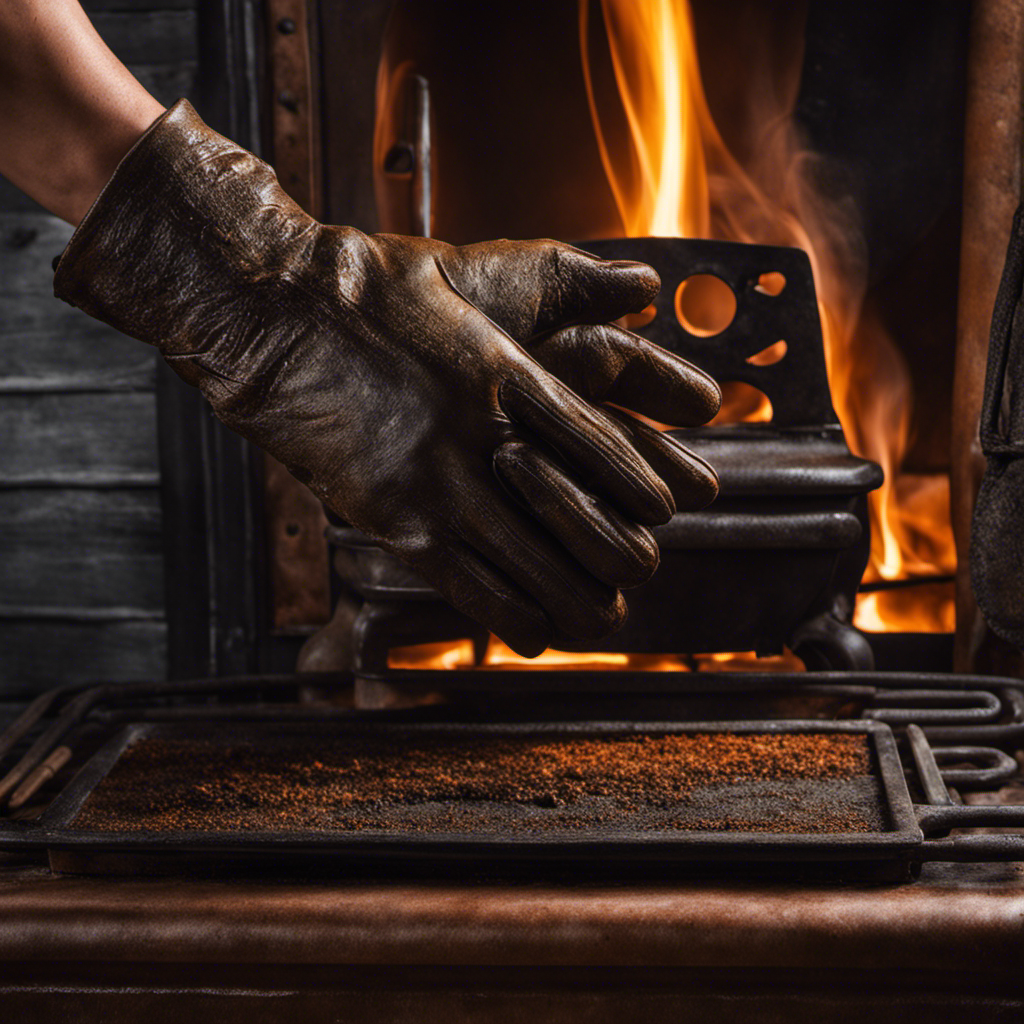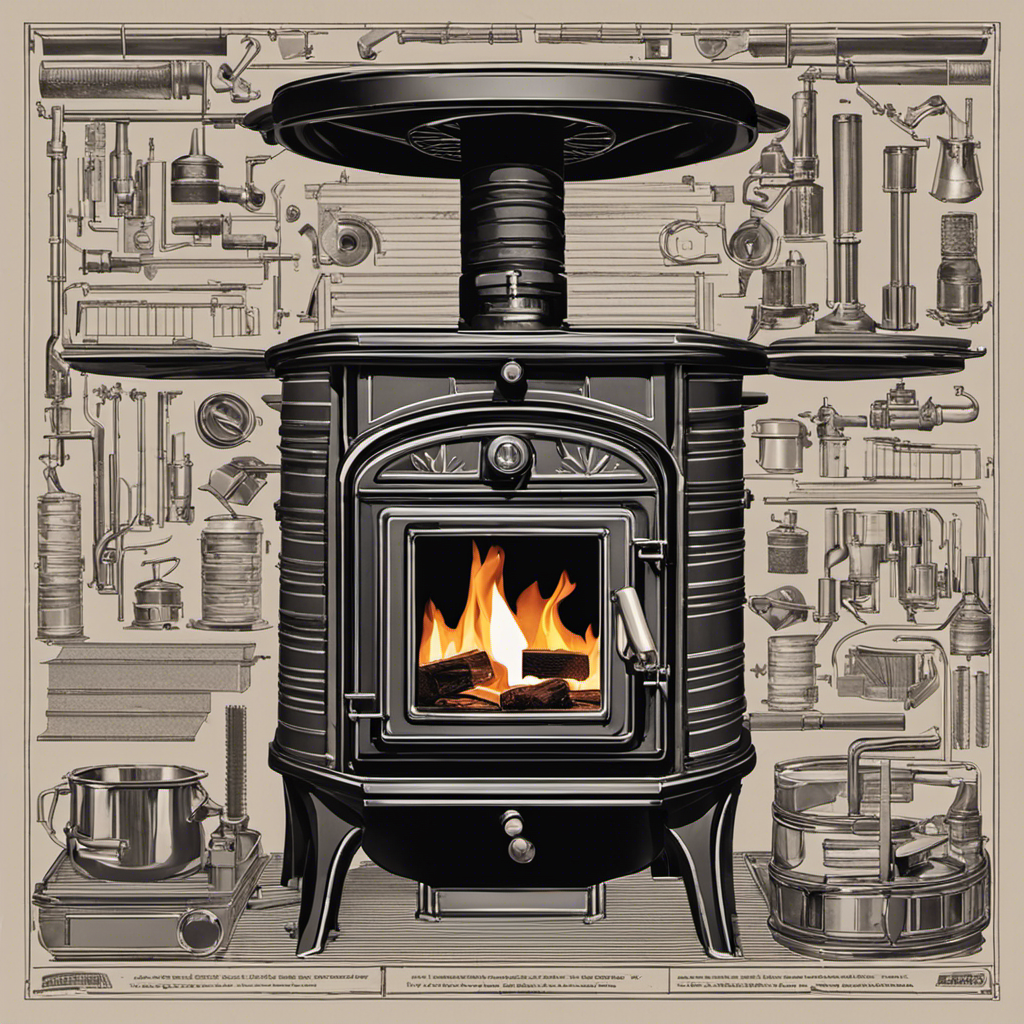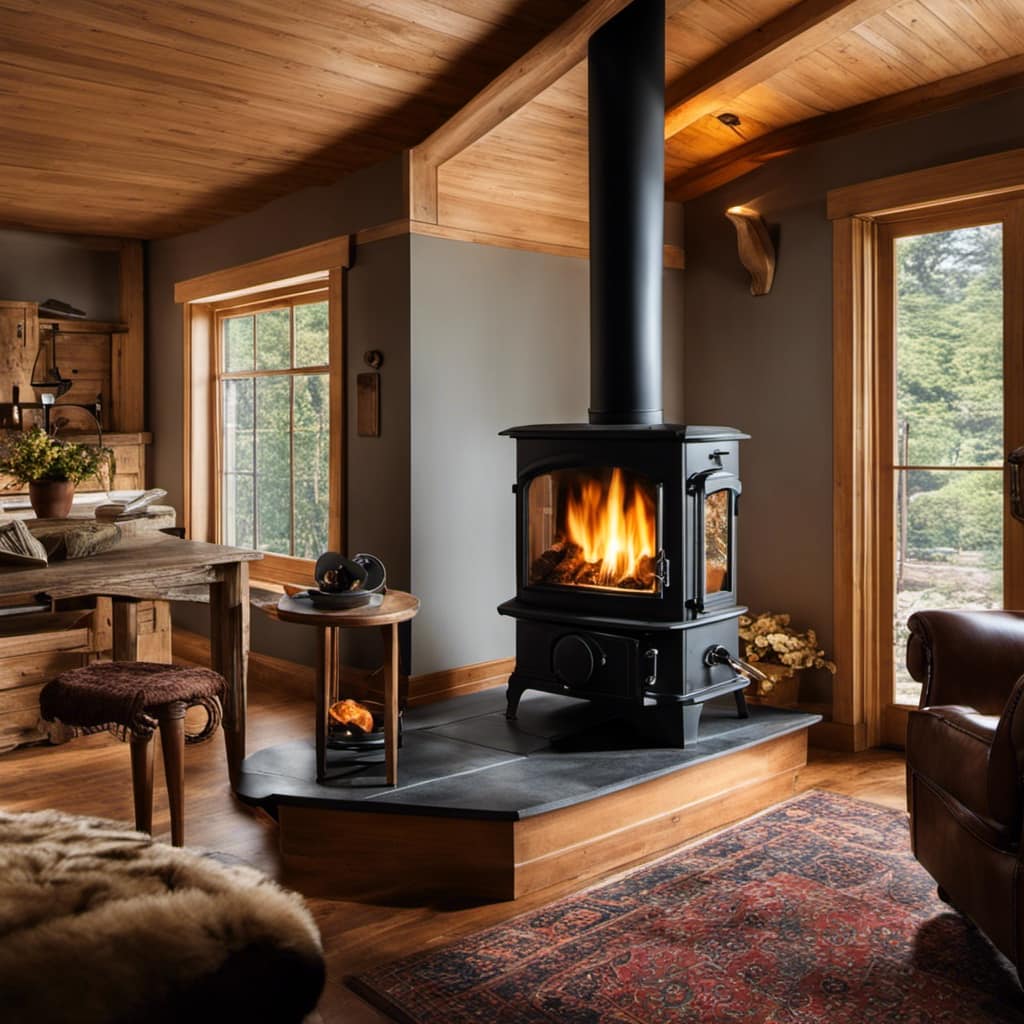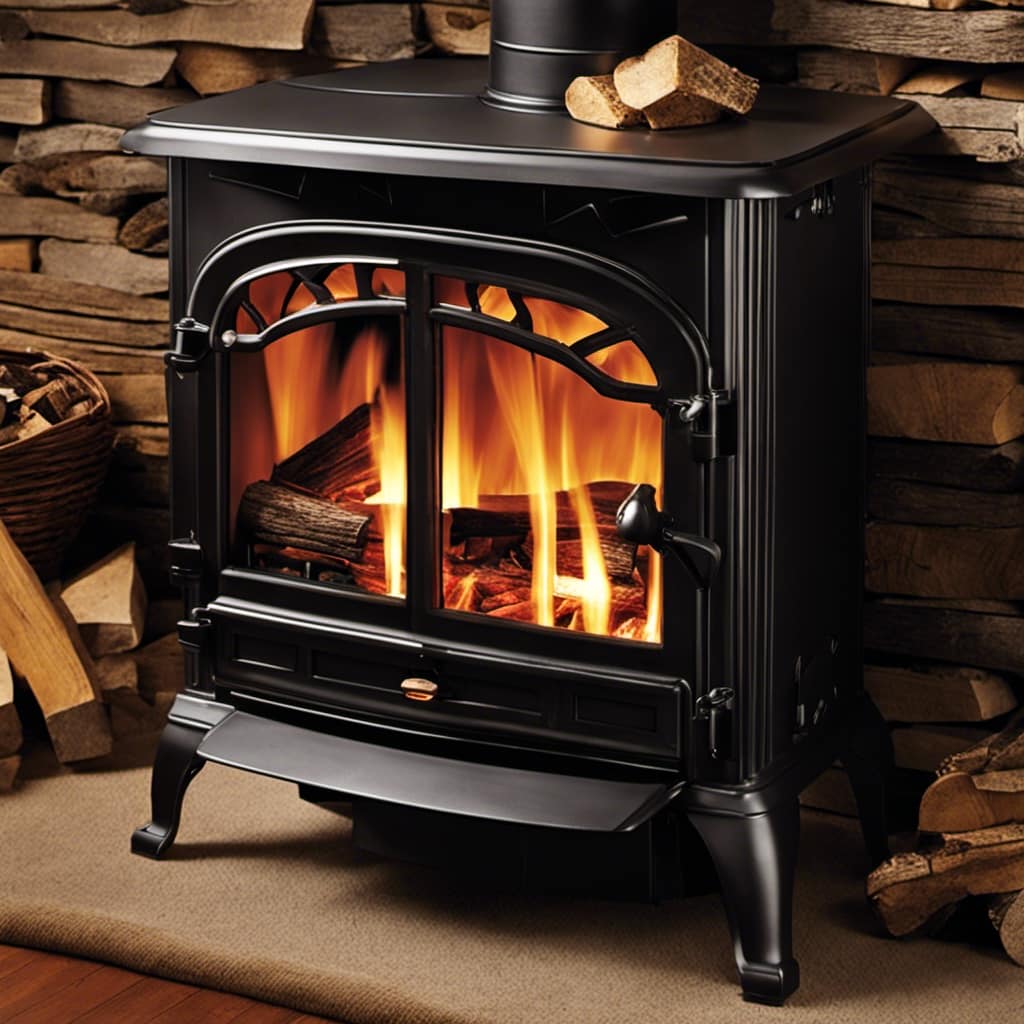As a fan of the cozy warmth provided by a cast iron wood stove, finding rust on this beloved item can be quite frustrating. However, do not worry, as I have a solution for you!
In this article, I’ll share my tried-and-true methods for removing rust from a cast iron wood stove. With just a few simple tools and a bit of elbow grease, you’ll be able to restore your stove to its former glory and enjoy years of rust-free fires.
Let’s get started!
Key Takeaways
- Moisture, high humidity, and direct water contact are the main causes of rust on a cast iron wood stove.
- Improper sealing or cracks in the stove’s exterior can contribute to rust formation.
- The presence of salt or corrosive substances can accelerate rusting.
- Regular inspection, maintenance, ventilation, and protective coating help prevent rust.
Understanding the Causes of Rust on a Cast Iron Wood Stove
I understand that moisture is the main cause of rust on a cast iron wood stove. Common rusting issues often occur when the stove is exposed to high humidity or when water comes into direct contact with the metal surface. This can happen if the stove isn’t properly sealed or if there are any cracks or gaps in the stove’s exterior.
Rust formation can also be accelerated by the presence of salt or other corrosive substances. To prevent rust from forming on a cast iron wood stove, it’s important to keep the stove dry and protected from moisture. Regularly inspecting and maintaining the stove, ensuring proper ventilation, and applying a protective coating can all help in preventing rust.
Now that we understand the common rusting issues and how to prevent them, let’s move on to gathering the necessary tools and materials for rust removal.
Gathering the Necessary Tools and Materials for Rust Removal
To effectively remove rust from a cast iron wood stove, I’ll need a wire brush, sandpaper, and a rust remover solution. Choosing the right rust removal product is crucial to ensure that the process is effective and safe for both the stove and myself. It’s important to select a product that’s specifically designed for removing rust from metal surfaces.
Additionally, I must take proper safety precautions during rust removal. This includes wearing gloves, goggles, and a mask to protect myself from any potential chemical fumes or particles. It’s also important to work in a well-ventilated area to minimize exposure to any harmful substances. These precautions will help to ensure a successful and safe rust removal process.
Now, let’s move on to preparing the cast iron wood stove for rust removal.
Preparing the Cast Iron Wood Stove for Rust Removal
Before starting the rust removal process, I’ll need to thoroughly clean the cast iron wood stove to ensure optimal results. Cleaning techniques play a crucial role in preventing rust from reoccurring and maintaining the longevity of the stove.
To begin, I’ll remove any loose dirt or debris using a soft brush or cloth.
Next, I’ll use a mixture of warm water and mild detergent to gently scrub the surface of the stove. It’s important to avoid abrasive cleaners or steel wool, as they can damage the cast iron.
After rinsing off the soapy residue, I’ll dry the stove completely using a clean towel or allowing it to air dry.
Taking these steps will ensure that the rust removal process is as effective as possible and help prevent future rust from forming.
Applying Effective Rust Removal Techniques to the Wood Stove
One effective technique for removing rust from the wood stove is using a mixture of vinegar and baking soda to create a paste. This paste is then applied to the affected areas and scrubbed with a wire brush. This method works well because the acidity of the vinegar helps to dissolve the rust while the baking soda acts as a gentle abrasive.
Here are four additional rust removal tips to restore the original shine of your cast iron wood stove:
-
Sanding: Use sandpaper or a sanding block to remove surface rust. Start with a coarse grit and gradually move to a finer grit for a smooth finish.
-
Naval Jelly: Apply a rust converter like naval jelly to dissolve and neutralize the rust. Follow the product instructions carefully for best results.
-
Citric Acid: Create a solution of citric acid and water and apply it to the rusted areas. Let it sit for a few hours before scrubbing with a brush.
-
Electrolysis: This method involves using an electrolyte solution and a power source to remove rust. It’s best suited for heavily rusted surfaces.
Maintaining a Rust-Free Cast Iron Wood Stove for Long-Term Use
I regularly clean and oil my cast iron wood stove to keep it rust-free for long-term use. Preventing rust on a cast iron wood stove is essential to maintain its efficiency and longevity.
One of the best practices for cleaning and maintaining a cast iron wood stove is to start by removing any ashes and debris from the firebox after each use. This prevents the accumulation of moisture, which can lead to rust.
Next, I use a wire brush to gently scrub away any rust spots on the stove’s surface. Once the rust is removed, I apply a thin layer of stove polish or high-temperature paint to protect the cast iron from further rusting.
Additionally, I make sure to check the gaskets and seals regularly and replace them if necessary to prevent air leaks that could lead to rust.
Frequently Asked Questions
Can I Use Regular Household Cleaning Products to Remove Rust From a Cast Iron Wood Stove?
Yes, regular household cleaning products can be effective in removing rust from a cast iron wood stove. However, there are also natural remedies and household cleaning alternatives that can be equally or even more effective.
How Often Should I Remove Rust From My Cast Iron Wood Stove?
I clean my cast iron wood stove regularly to prevent rust buildup. The best methods to remove rust include using a wire brush, sandpaper, or a vinegar solution. It is important to remove rust as soon as it appears to maintain the stove’s performance.
Is It Safe to Use a Wire Brush or Sandpaper to Remove Rust From a Cast Iron Wood Stove?
Using a wire brush or sandpaper to remove rust from a cast iron wood stove can be safe, but there are alternative methods that may be gentler on the surface. It’s important to prioritize safety and protect the integrity of the stove.
Can I Prevent Rust From Forming on My Cast Iron Wood Stove?
To prevent rust and maintain a cast iron wood stove, I regularly clean and season it with a protective coating of oil. This helps to create a barrier against moisture and oxidation, keeping the stove rust-free and in good condition.
Can I Use a Rust Converter to Remove Rust From a Cast Iron Wood Stove?
Yes, I can use a rust converter to remove rust from a cast iron wood stove. It’s important to properly apply the rust converter, following the instructions, and it can also be used on other metal surfaces.
Conclusion
In conclusion, removing rust from a cast iron wood stove is a simple and effective process that can be done with the right tools and techniques.
While some may argue that preventing rust in the first place is a better solution, it’s important to note that rust can occur due to various factors beyond our control.
By following the steps outlined in this article, you can ensure a rust-free and long-lasting cast iron wood stove for your heating needs.
Growing up surrounded by the vast beauty of nature, Sierra was always drawn to the call of the wild. While others sought the comfort of the familiar, she ventured out, embracing the unpredictable and finding stories in the heartbeat of nature.
At the epicenter of every remarkable venture lies a dynamic team—a fusion of diverse talents, visions, and passions. The essence of Best Small Wood Stoves is crafted and refined by such a trio: Sierra, Logan, and Terra. Their collective expertise has transformed the platform into a leading authority on small wood stoves, radiating warmth and knowledge in equal measure.











